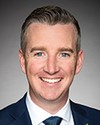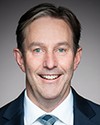Good afternoon, Mr. Chair and committee members. I thank you for the opportunity to appear before you today. I also have the privilege of speaking to you from the same indigenous lands as those who spoke before me this afternoon.
I want to highlight a few things before I start. First, I am not a physician. Second, members of the Federation of Medical Regulatory Authorities of Canada have delegated statutory authority to regulate physicians to serve the public interest, and, third, as a voluntary, member-based organization representing all 13 provincial and territorial medical regulatory authorities, or MRAs, FMRAC facilitates discussion and collaborative efforts of its members towards the goal of improved regulation.
HESA has undertaken this study in recognition of the exhaustion and burnout among health care professionals, including physicians. Over the past few years, the MRAs have seen an increase in the number of physicians who have come to their attention because of burnout, mental health and substance abuse disorders. MRAs are mandated to protect the public, and their responsibilities rarely if ever include advocacy for the profession. However, they do include administration of a quality assurance program for identified physicians. While this is hard to quantify, FMRAC believes that the exhaustion and burnout of physicians across Canada are significant enough that they are having a negative impact on the quality of care that Canadians are receiving. In other words, physician health is a patient safety issue.
Your study intends to examine how the federal government can facilitate the recruitment and retention of health care professionals. The only way to do this is to approach the situation by putting the patient smack in the middle of this discussion.
I'm going to address four issues.
First is virtual care. FMRAC defines virtual care as the provision of care by means of electronic communication in which the patient and the physician are at different locations. MRAs believe virtual care may enable more access to care across Canada. However, physicians are expected to provide all elements of good medical care. The standard of care expected is the same whether the patient is seen in person or by virtual means. Importantly, meeting the standard of care inevitably requires access to in-person care for many conditions. This means that virtual care can be leveraged only so far.
Second is international medical graduates or IMGs. IMGs seek to come to Canada from many countries with very many different training programs. Supporting pathways to licensure for IMGs represents a meaningful opportunity to help address health human resource shortages, provided the right review and assessment protocols are established and/or maintained
Graduates of Canadian medical schools, as Dr. Moineau can very well describe, go through thorough accredited undergraduate and postgraduate training, with regular assessments along the way before being promoted to the next level of education. They also must pass national certification exams before being issued a licence to practise in any part of Canada. These are all steps along the way to ensuring the public that the physicians who treat them are qualified to do so.
MRAs also have mechanisms in place to assess the international graduates. There are limited resources available, and scaling these programs up to a broader national level would require a lot more resources, but doing that could have a significant impact on the challenges Canada is facing today. It would, in our opinion, be unconscionable to bypass the appropriate review and assessment of each IMG candidate on the route to licensure simply to increase the number of physicians available, because even a handful of incompetent physicians could have a dramatically negative impact on the health and safety of tens of thousands of Canadians
Third is a national registry of physicians and other health care providers. The MRAs are the single source of truth when it comes to data about physicians who are licensed to practise in this country. Their data are held in each province and territory.
Having a national registry or list of all the physicians could be a very useful tool for the regulators themselves—as many health care workers are licensed in more than one jurisdiction—but also for health human resources planning, especially if it includes information about a practitioner's scope of activities.
Such a registry requires significant developmental resources and an ongoing commitment to keeping the database up to date and relevant to governments, regulators, researchers and policy-makers. Two important tools are already available for medicine—a unique identifier for universal data collection, and a common portal for licensure applications.
In addition to a national registry, the federal government may wish to look at the U.S. National Practitioner Data Bank. There's more information about that in the document I submitted.
Finally, on other health care providers, FMRAC and the MRAs welcome other regulated health care professionals, such as physician assistants, nurse practitioners, anaesthesia assistants, associate physicians and others, into the system, as they can assist in meeting the health care needs of the people of Canada.
For all health care professionals, the main tenets will be the identification of the required competencies, the appropriate training to achieve those competencies and, finally, the relevant assessments in the right settings to ensure that those competencies have indeed been achieved.
In closing, thank you for allowing me to present to the health committee today. I am happy to answer your questions and listen to your comments in both English and French.
Thank you.



